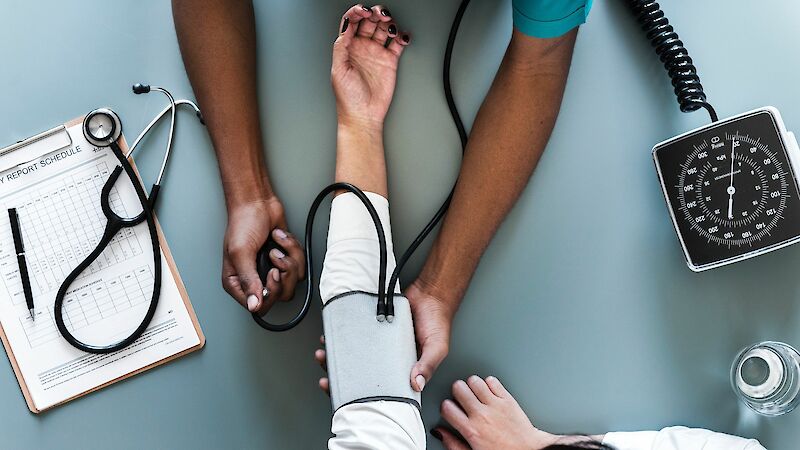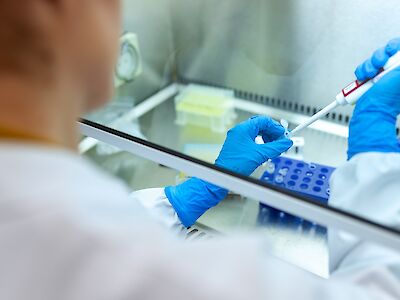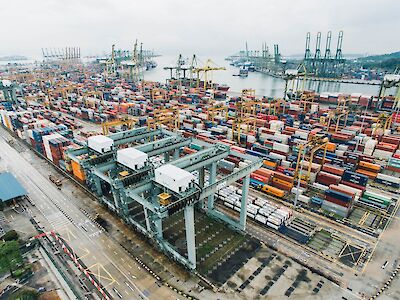Made in Germany: Join the Healthcare Revolution
Why Germany's medical sector is a powerhouse of innovation
- Next Stop Germany
- Series "Made in Germany" - Industry Expertise
- Made in Germany: Innovative chemical and pharmaceutical industry
- Made in Germany: Where sustainability is an expert matter
- Made in Germany: Plan your Finance Event in the Heart of Europe
- Made in Germany: Join the Healthcare Revolution
- Made in Germany: Dive into innovation and technology
- Made in Germany: Take your transport and logistics event to the next level
 © Unsplash / Foto: rawpixel
© Unsplash / Foto: rawpixel
From analytics to apps, wearables to sensors, and headsets to mobile devices: medicine and healthcare is in the middle of a full-blown tech revolution that not only provides healthcare professionals but each one of us with new ways and means of taking care of our wellbeing.
As Europe’s largest healthcare market, Germany leads the way in medtech innovation, hitting event planners with a “perfect storm” of expertise from corporates, hospitals, start-ups as well as research and academic institutions.
Innovation-driving approach focused on medical clusters
As global demand for innovative medical technology solutions continues to grow, medical devices “made in Germany” have long made a significant contribution to enhancing patient health care and quality of life around the world. Early on, the country focused on bundling resources and expertise with a few to continuous innovation which has resulted in Germany-wide hubs of medical expertise. Today, Germany is home to more than 30 specialized cluster networks focusing on medical technology that connect companies, hospitals, universities and research institutions and operate with dedicated management teams to support joint R&D projects, shared facilities and training programs for members.
This innovation-driving approach has clearly paid off: Based on government figures, a third of the sector’s sales revenues come from products that are less than three years old. The country also overtakes other competitors in terms of registering new patents for surgery and surgical navigation. A potent indicator for innovation power that is also reflected in the overall figures for medical technology patents registered with the European Patent Office in Munich: In the global ranking, Germany is second only behind the USA as the most active country in this field and with 1,340 patents in 2017 also the only European country in that list clocking the four-digits.
Regional hubs with specific expertise
Ok, enough of the figures. Let’s take a closer look at where to go for cutting-edge know-how in healthcare and medicine. Traditionally, Bavaria is a major centre for all things medical. In 2006, the foundation of the Medical Valley European Metropolitan Region Nuremberg (EMN) kicked off an impressive success story that saw the establishment of what is now a global center for medical excellence. In and around Nuremberg, key players from business, science, healthcare and politics pool resources and create synergies. The region is one of the leading sources for global health market solutions, delivering, among others, medical devices all around the world but also researching into solutions for independent living at home in old age or the financial sustainability of healthcare systems.
Altogether, Bavaria alone produces 60 percent of Germany’s electro-medical equipment and global players, including Siemens Medical Solutions and GlaxoSmithKline, ensure that 70 percent of Bavarian-made medtech products are exported. Meanwhile, the region’s neighbor Baden Württemberg has the highest density of medtech companies, mainly around Stuttgart and with a focus on dental materials/equipment and surgical mechanics. Moving north, Germany’s most populous state North Rhine-Westphalia is home to some key global players such as 3M Medica, Medtronic and Sarsted and the regional medical technology cluster focuses, among others, on personalized and data-driven medicine.
In and around Berlin, the “Health Capital Berlin Brandenburg” cluster is known for companies specializing in medical imaging which has prompted leading international companies in this field to set up their EU head offices or branches in the German capital. In recent years, Berlin’s buoyant start-up scene has added another interesting dimension to the mix, with local companies regularly listed in “European health-tech start-ups to watch” round-ups.
Attractive destinations + medical associations = successful events
Not surprisingly, the wide range of expertise and potential for insightful site visits regularly attract international medical associations to Germany, including the 2017 17th World Congress of Psychiatry (WPA) in Berlin with 10,000 attendees or the 2018 ESC Congress of the European Society of Cardiology in Munich with 32,000 attendees. According to ICCA figures for 2017, altogether 146 medical meetings with 75,718 participants took place in Germany – and apart from the professional side of things, we’d venture to say that the country’s characterful destinations with lots of material to play with for social programs and incentives did figure in the selection process, too …
 ©
© ©
© ©
© ©
© ©
©